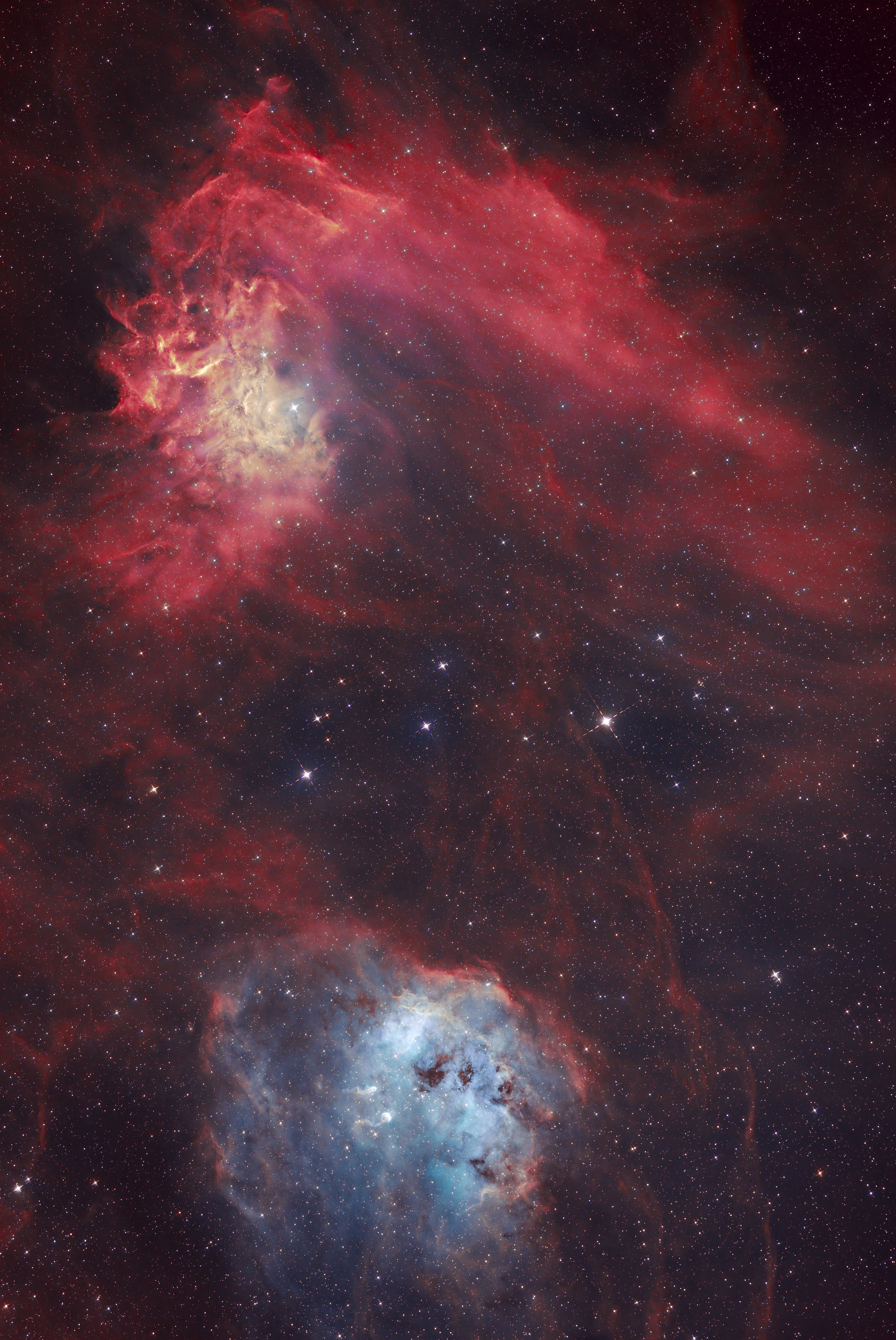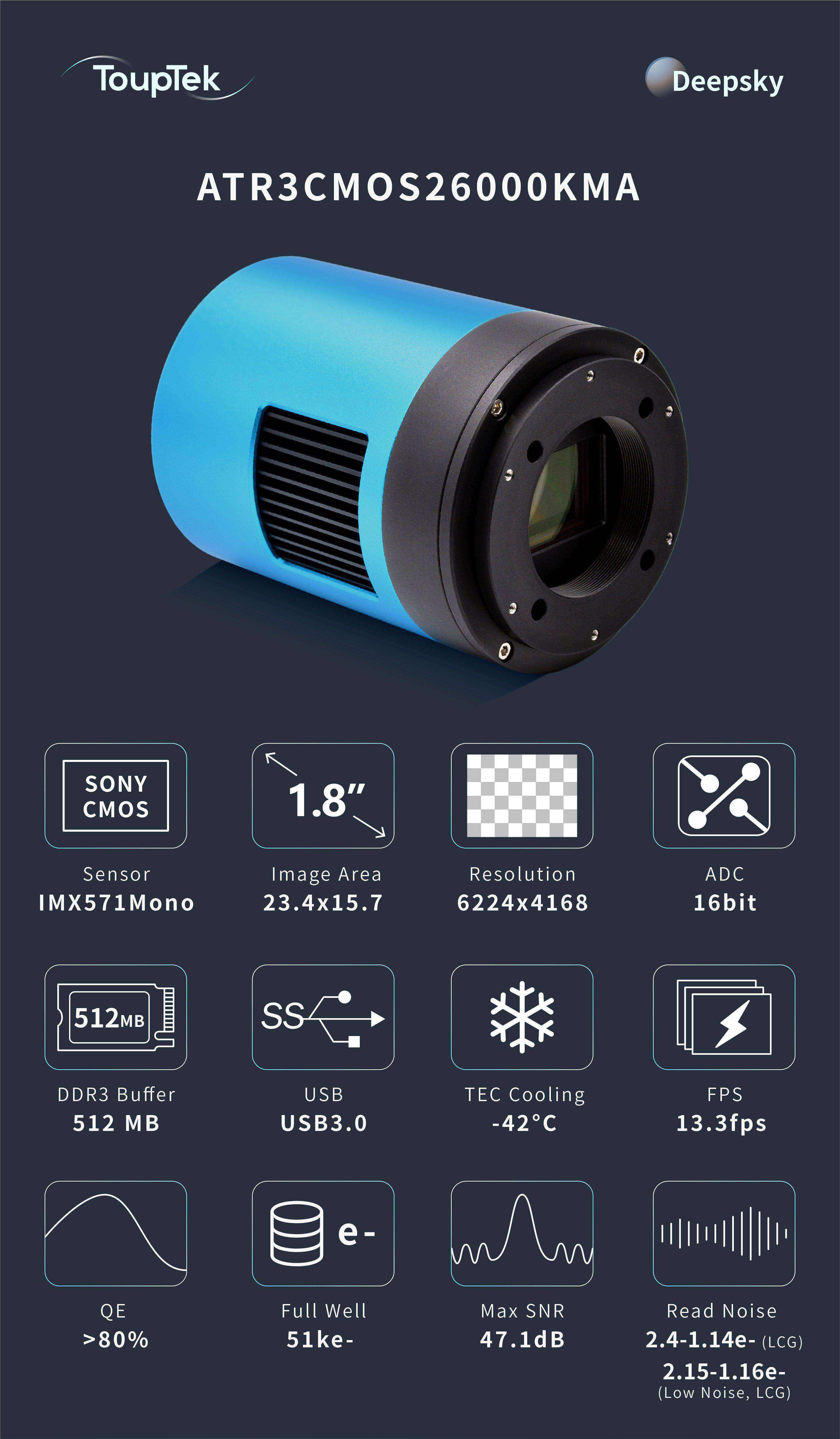Deep within the cosmic sea, where stars are born and celestial tales unfold, lie two of the most intriguing and visually stunning objects: the Flame Nebula and the Tadpole Nebula. These cosmic wonders, set against the backdrop of the infinite universe, offer a spectacular showcase of the processes that govern star formation and the intricate beauty of nebular structures. Let's delve into the fascinating world of these two nebulae, exploring their characteristics, origins, and the secrets they hold.

photographer:有文化的包工头
camera:ToupTek ATR3CMOS26000KPA
Guide Cameras:ToupTek GPCMOS02000KMA
telescope:TakahashiE-130D
Equatorial mount:CEM70
Nestled in the constellation Orion, near the easternmost star of Orion's belt, Alnitak, the Flame Nebula is a glowing testament to the vibrant processes of star formation. Officially designated as NGC 2024, this emission nebula captures the imagination with its distinct, fiery appearance, resembling a flickering flame against the cosmic dark.
The Flame Nebula is illuminated by the ultraviolet light from Alnitak, the massive star that lies in close proximity. This proximity results in the nebula's rich red and orange hues, as the hydrogen gas within it gets ionized and emits its own light. The intense stellar winds and radiation from Alnitak also sculpt the nebula's shape, creating dark, dense regions where future stars may be born.
At the heart of the Flame Nebula, astronomers have discovered evidence of a cluster of young stars, some of which are still enveloped in their dust cocoons. These protostars are the future of the nebula, gradually making their way to joining the main sequence of stars in our galaxy. The combination of active star formation and the dynamic interplay of light and dust make the Flame Nebula a prime target for studying the life cycle of stars.
The Tadpole Nebula, or IC 410, presents a dramatically different spectacle. Located in the constellation Auriga, this emission nebula is characterized by its unique appearance, featuring two prominent features known as the "Tadpoles," which resemble their namesake aquatic creatures. These tadpole-shaped structures are in fact dense concentrations of gas and dust, sculpted by the stellar wind from nearby young stars.
The Tadpole Nebula owes its vibrant glow to the radiation from a cluster of young, hot stars within it. The intense ultraviolet radiation from these stars ionizes the surrounding hydrogen gas, creating the stunning visual spectacle we observe. The "Tadpoles" themselves are thought to be sites of ongoing star formation, showcasing the nebula as an active stellar nursery.
Both the Flame Nebula and the Tadpole Nebula offer a glimpse into the intricate dance of stellar birth and evolution. Their proximity to us provides astronomers with a valuable opportunity to study the processes of star formation and the interaction between young stars and their natal clouds. These nebulae are not only a testament to the dynamic nature of our universe but also to the beauty that lies in the process of creation and transformation in the cosmos.
For amateur astronomers and stargazers, the Flame and Tadpole Nebulae are accessible targets with the right equipment. The Flame Nebula can be observed with a small telescope, especially under dark skies, near Orion's belt. The Tadpole Nebula, while a bit more challenging, can be appreciated with larger telescopes under the right conditions. Both nebulae serve as a reminder of the universe's vastness and the ongoing processes that shape our cosmos.

ToupTek ATR3CMOS26000KMA
The Flame and Tadpole Nebulae are just two of the countless wonders that adorn our night sky. They stand as celestial symbols of the ongoing cycle of stellar birth and death, highlighting the dynamic and ever-changing universe we inhabit. As we continue to explore and understand these nebular enigmas, they fuel our curiosity and remind us of the enduring quest to decipher the mysteries of the cosmos. Through the study of such objects, we not only uncover the secrets of our universe but also reflect on our own place within this grand cosmic tapestry.